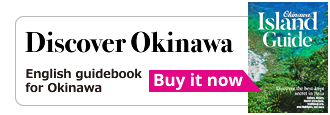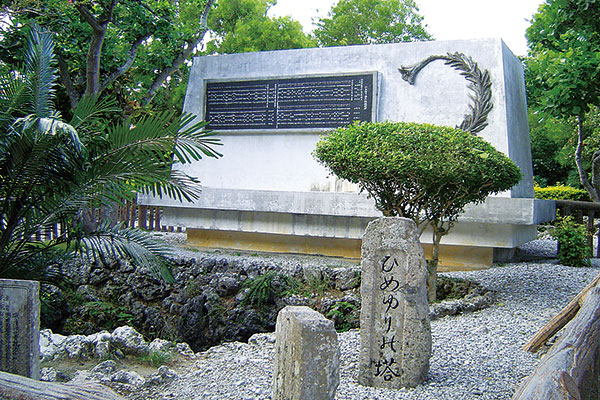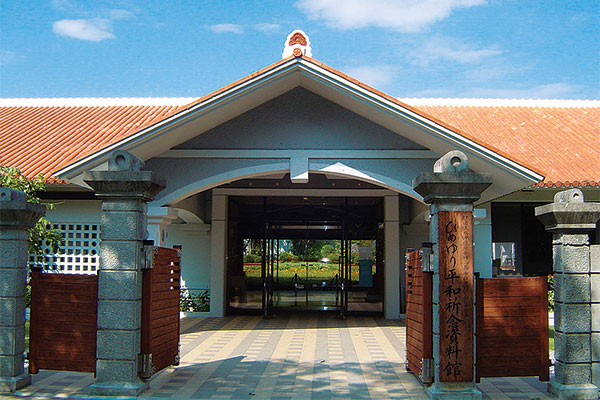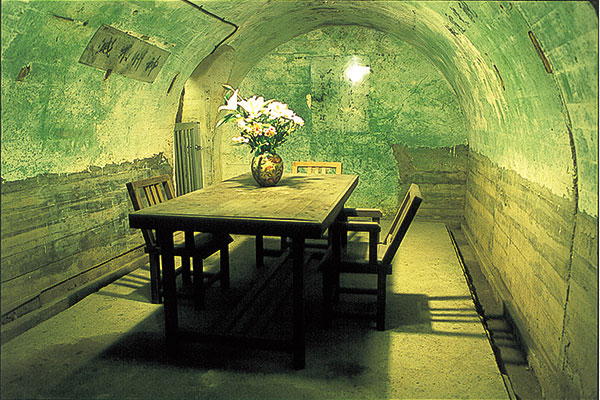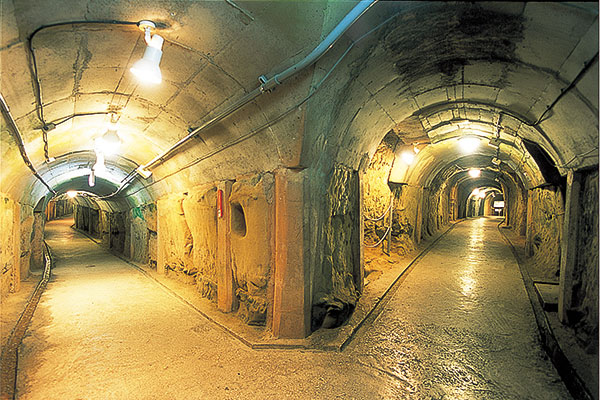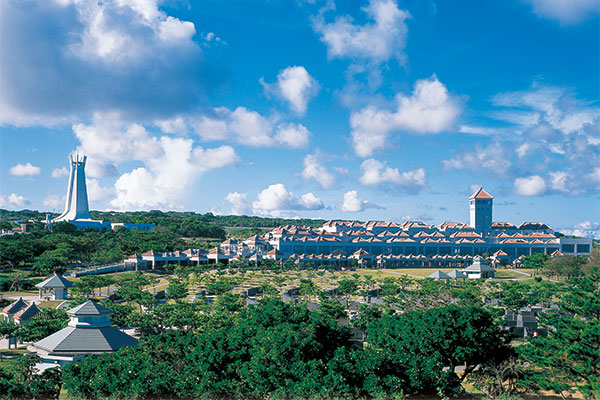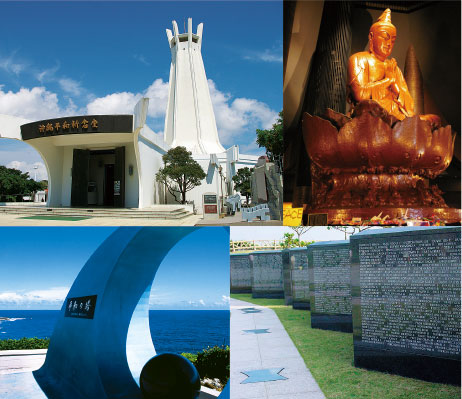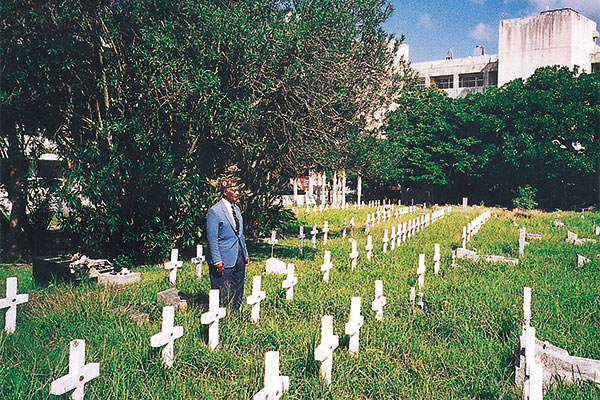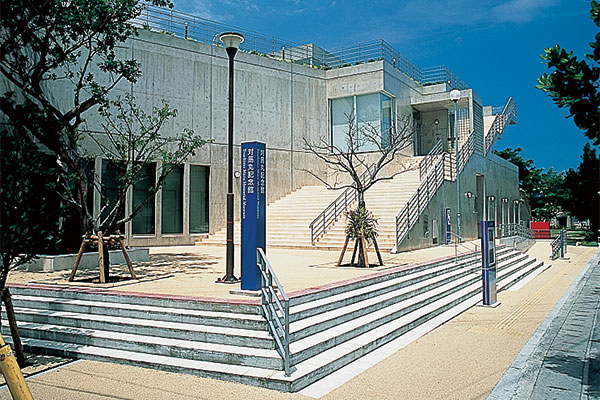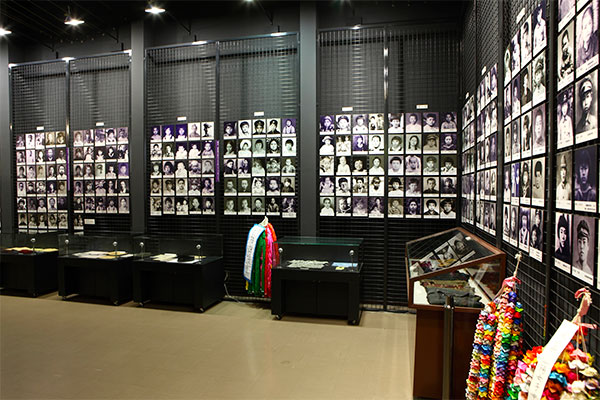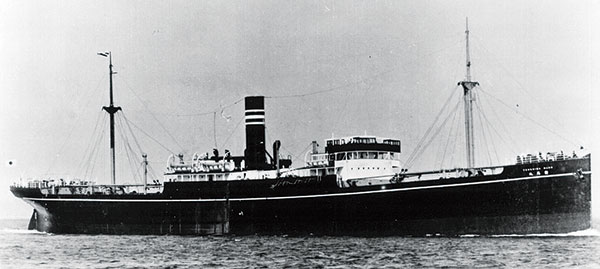Historic spots
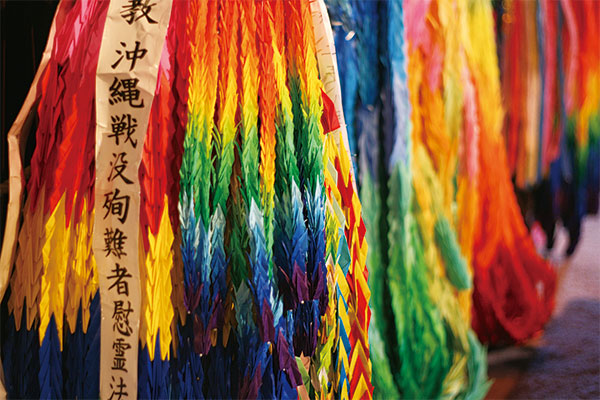 Okinawa was the scene of a fierce ground battle at the end of World War II. As a consequence, over 240,000 people, military and civilian alike, died in the battle, and more than the half of these victims were Okinawan civilians. At the old battle sites in Okinawa, various memorial monuments and museums were built to pray for world peace. These are fitting places to remember the tragedies of war and learn about the importance of peace.
Okinawa was the scene of a fierce ground battle at the end of World War II. As a consequence, over 240,000 people, military and civilian alike, died in the battle, and more than the half of these victims were Okinawan civilians. At the old battle sites in Okinawa, various memorial monuments and museums were built to pray for world peace. These are fitting places to remember the tragedies of war and learn about the importance of peace.
Himeyuri Monument/Himeyuri Peace Museum
During the last days of the Battle of Okinawa, a group of 222 young girls and 18 teachers at the Okinawa Women's Normal School and the First Prefectural Girls High School were ordered by the Japanese Army to join the Haebaru Army Field Hospital medical unit as nurses. The women died in a cave along with Japanese soldiers rather than surrender to the Americans, who they were told would rape them. The Himeyuri Peace Museum was constructed here in memory of the young girls and teachers who lost their lives. It consists of five exhibit rooms displaying photos from the Battle of Okinawa, portraits of the victims and books of testimonials by survivors. Former nurses used to serve as volunteer guides at the museum; however, there are fewer and fewer people alive who experienced the war, and volunteer guides no longer serve in that capacity. The museum hopes that everyone will learn the importance of peace in the world through an extensive range of exhibits showing the realities of war.
671-1 Ihara, Itoman City
Tel: 098-997-2100/2101
Hours: 9:00-17:30 (Last entry 17:00)
Open daily
Admission to the museum: 300 yen for adults, 200 yen for ages 16-18 and 100 yen for ages 6-15.
Directions: From Naha City, take Route 331 towards Itoman City. Continue south past Nashiro. Himeyuri no To is located beyond Ryukyu Glass.
Japanese Navy Underground Headquarters
This site is where the Japanese Navy, led by Rear Adm. Ota, fought a desperate battle defending the island during the Battle of Okinawa.
As his defense collapsed, Ota sent a telegraph to the vice minister of the navy in which he said that the Okinawan people did their very best in the battle. Later he and his men committed suicide. In 1970, the Okinawans opened the underground facility to the public hoping that future generations would see the futility of war and instead pursue world peace. You can tour several of the tunnels and view the operations room just as it appeared in 1945.
236 Tomigusuku, Tomigusuku City
Tel: 098-850-4055
Hours: July-September 8:30-17:00; October-June 8:00-17:00
Open daily
Admission: 420 yen for adults and 210 yen for ages 6-15.
Directions: From Naha Airport take Route 332 towards Naha City. When you come to Onoyama Park, make a right onto Route 7. After going through a tunnel, turn left at the first light. Turn left at the end of the street and go straight into the parking area.
Okinawa Peace Prayer Park and Memorial Hall
The Memorial Hall, situated on Mabuni Hill, the site where the Battle of Okinawa ended, was created to mourn the loss of close to a quarter of a million people. The world's largest lacquer Buddha is open for viewing here, as are an art museum, meditation forest, peace bell and a series of pictures titled "War and Peace." One of the key features of the park is the Cornerstone of Peace inscribed with the names of some 240,000 individuals, including civilians and Japanese and foreign soldiers, who lost their lives in the Battle of Okinawa. The concept of the stone monuments is to remember those who died and to pray for them, to share lessons learned from war and to provide a place for meditation and learning. In addition, the Peace Memorial Museum exhibits testimonials of survivors of the war. Admission to the park is free.
Okinawa Peace Memorial Park
577 Mabuni, Itoman City
Tel: 098-997-2765
Hours: 8:00-22:00
Open daily
Admission: Free
Okinawa Prefectural Peace Memorial Museum
614-1 Mabuni, Itoman City
Tel:098-997-3844
Hours: 9:00-17:00
Closed: Dec. 29-Jan. 3
Admission: 300 yen for adults, 150 yen for ages 6-18 and college and university students, free for under 6.
Okinawa Peace Hall
448-2 Mabuni, Itoman City
Tel: 098-997-3011
Hours: 9:00-17:00
Open daily
Admission: 500 yen for adults, 350 yen for ages 13-18, free for under 6.
Directions: From Naha Airport, turn right onto Route 331 towards Itoman City. Follow this road for about 30 minutes. You'll see the Memorial Tower on your right. Ample parking is available.
Tomari International Cemetery
U.S. Commodore Matthew Perry landed on Okinawa for the first time in 1853 before heading for the Japanese mainland. The voyage across the Pacific was arduous, and some of his crew fell ill. Perry designated this as a final resting place for foreigners, and some of his crew is buried here. Although not well managed in the past, U.S. service members have cleaned the cemetery, allowing visitors to view the gravestones.
Tomari, Naha City
Admission: Free
Directions: From Naha Airport, take Route 58 towards Kadena Town. Turn left at the Tomari Takahashi intersection. The cemetery will be on your right, just past Family Mart.
Tsushima Maru Memorial
Tsushima Maru is the name of an evacuation ship sunk by the USS Bowfin on Aug. 22, 1944, during World War II. A total of 1,484 out of 1,661 passengers lost their lives, and 767 of those who perished were children. This memorial is dedicated to teaching the importance of world peace. Free brochures in English are available.
1-25-37 Wakasa, Naha City
Tel: 098-941-3515
Hours: 9:00-17:00
Closed: Thu, end and beginning of the year
Admission: 500 yen for adults, 300 yen for ages 13-18, 100 yen for ages 6-12.
Directions: From Naha Airport take Route 58 towards Urasoe City. Turn left at the Izumizaki intersection. When you come to Route 43, turn right, then make a left at the second street. Go straight, and the Tsushima Maru Memorial will be on your left.
Chibichirigama -- a peace monument for a peaceful world without war
On April 1, 1945 the first U.S. troops landed on the west coast of Okinawa near Yomitan. Chibichirigama is a cave where on the following day a large number of family members who had taken refuge there killed one other, having been told of cruel treatment by American soldiers, called kichiku (demons). According to witness testimonials, after the U.S. troops had landed, two men and a woman emerged from the cave with bamboo spears in hand. The men were killed in front of the cave, prompting some of the panicked villagers to commit group suicide. According to another testimonial, villagers in the cave first tried to suffocate themselves by making a fire and also used poison. When the poison ran out, they finally killed those remaining with sickles and knives. Of the 140 villagers who took shelter in the cave, 83 died a violent death. The Chibichirigama peace monument was built to honor the victims and to pray for world peace for us all and for future generations.
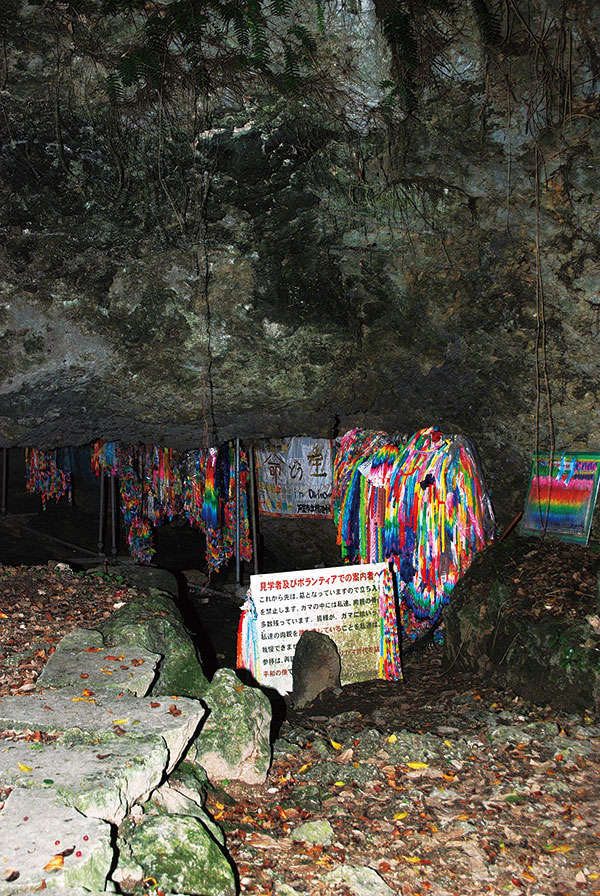 A quote from the epitaph inscribed on the stone monument About 60 percent of the 83 victims were young people under 18 years of age. In addition, two more people were killed by American soldiers. We built this monument fifty years after the Battle of Okinawa ended, in order to honor the victims and to symbolize our fresh resolve to pursue world peace representing the nation.
A quote from the epitaph inscribed on the stone monument About 60 percent of the 83 victims were young people under 18 years of age. In addition, two more people were killed by American soldiers. We built this monument fifty years after the Battle of Okinawa ended, in order to honor the victims and to symbolize our fresh resolve to pursue world peace representing the nation.
*Upon a request from the bereaved families, entry to the cave is restricted.
Directions: Follow Route 6 toward Cape Zanpa from Route 58. Stay on the left at the fork in the road where the Kanehide supermarket is located and go straight. After rounding a curve, the entrance of the cave is on the right.

